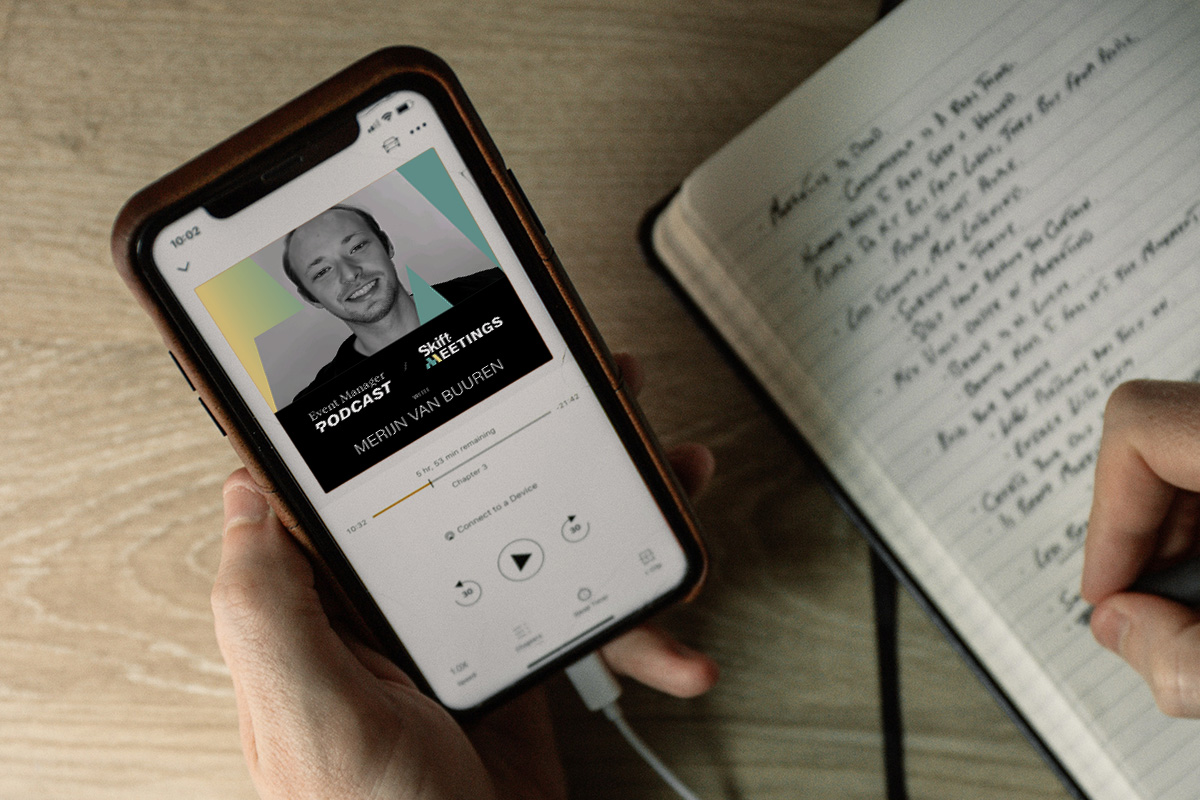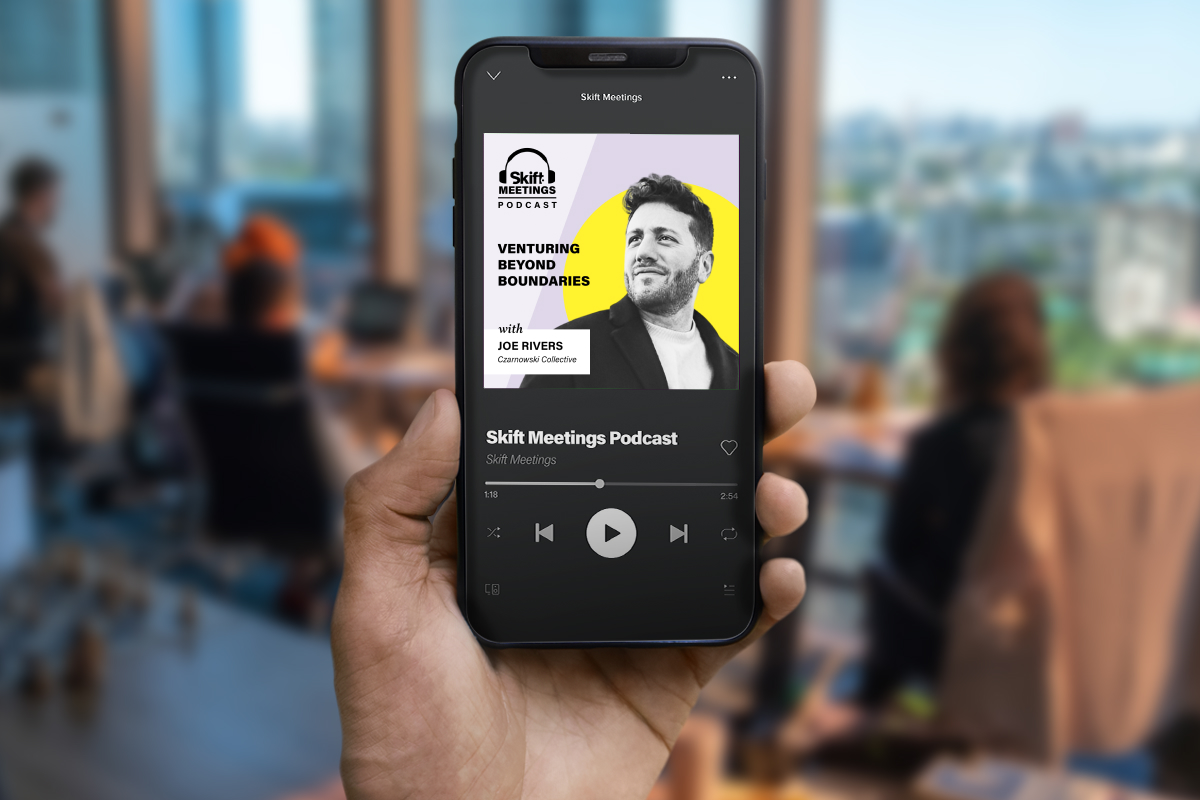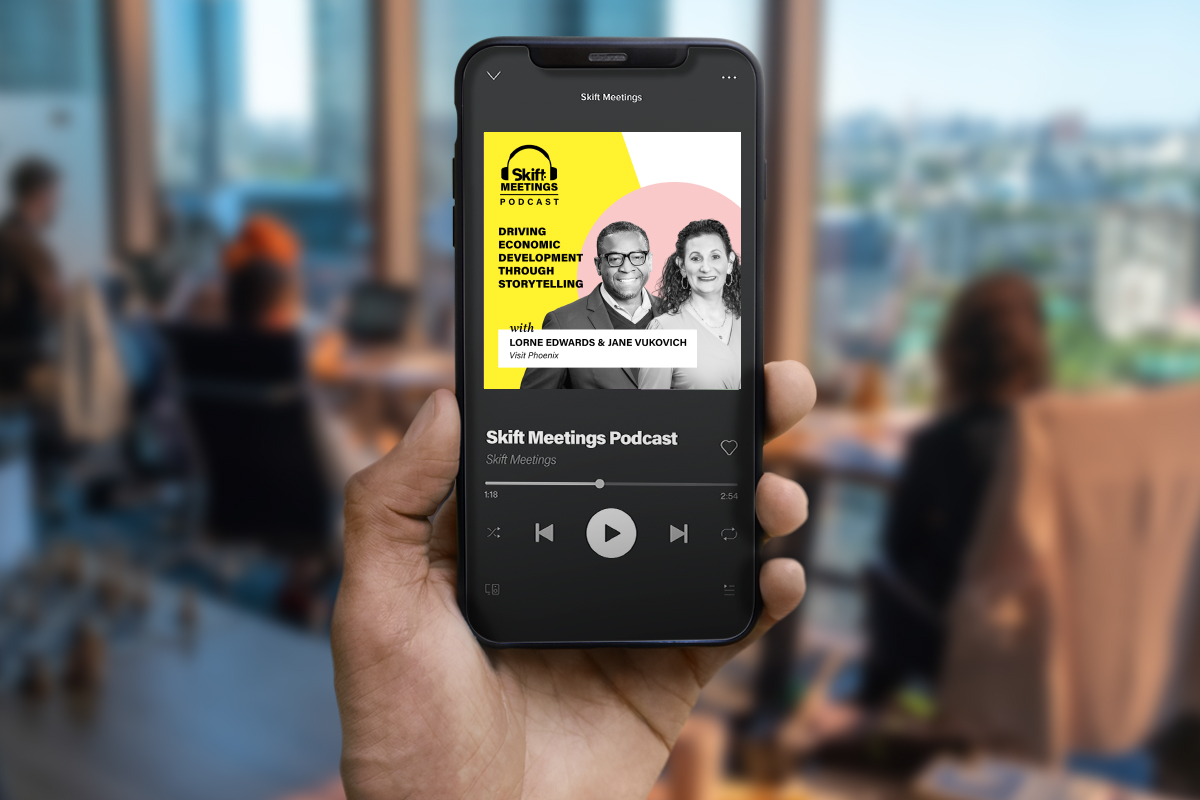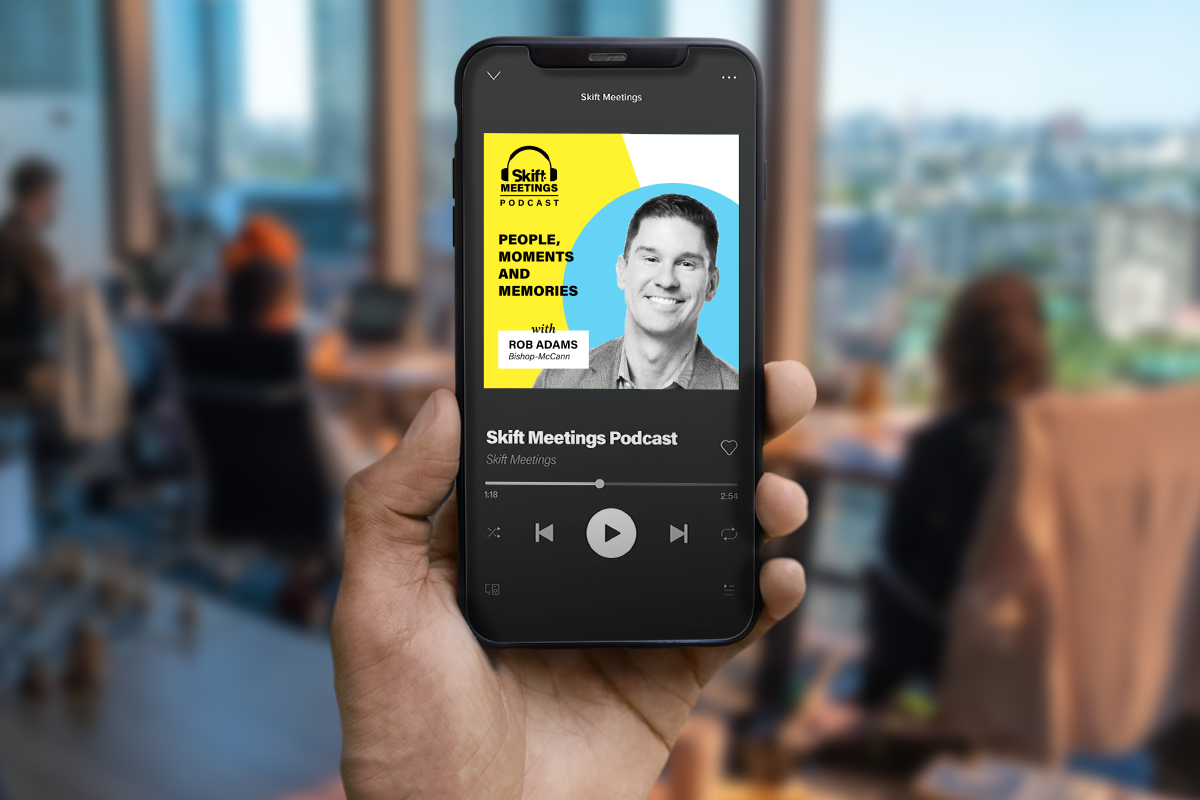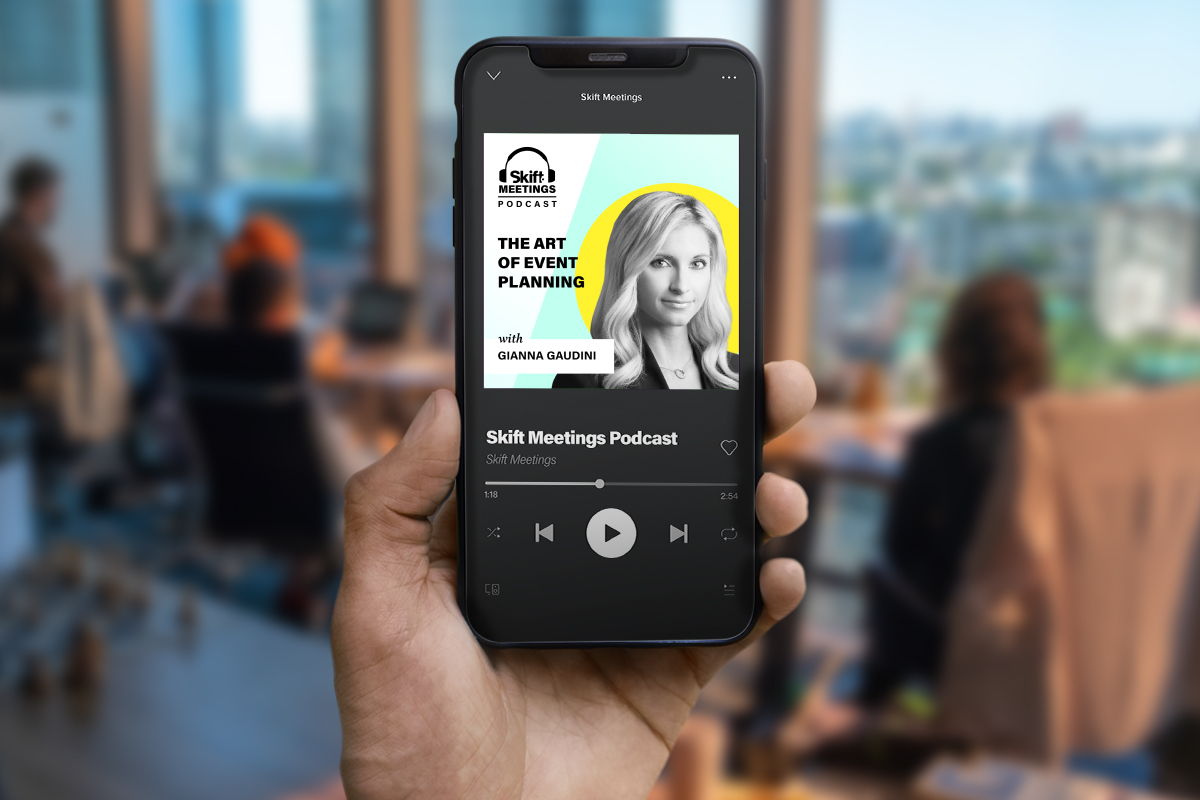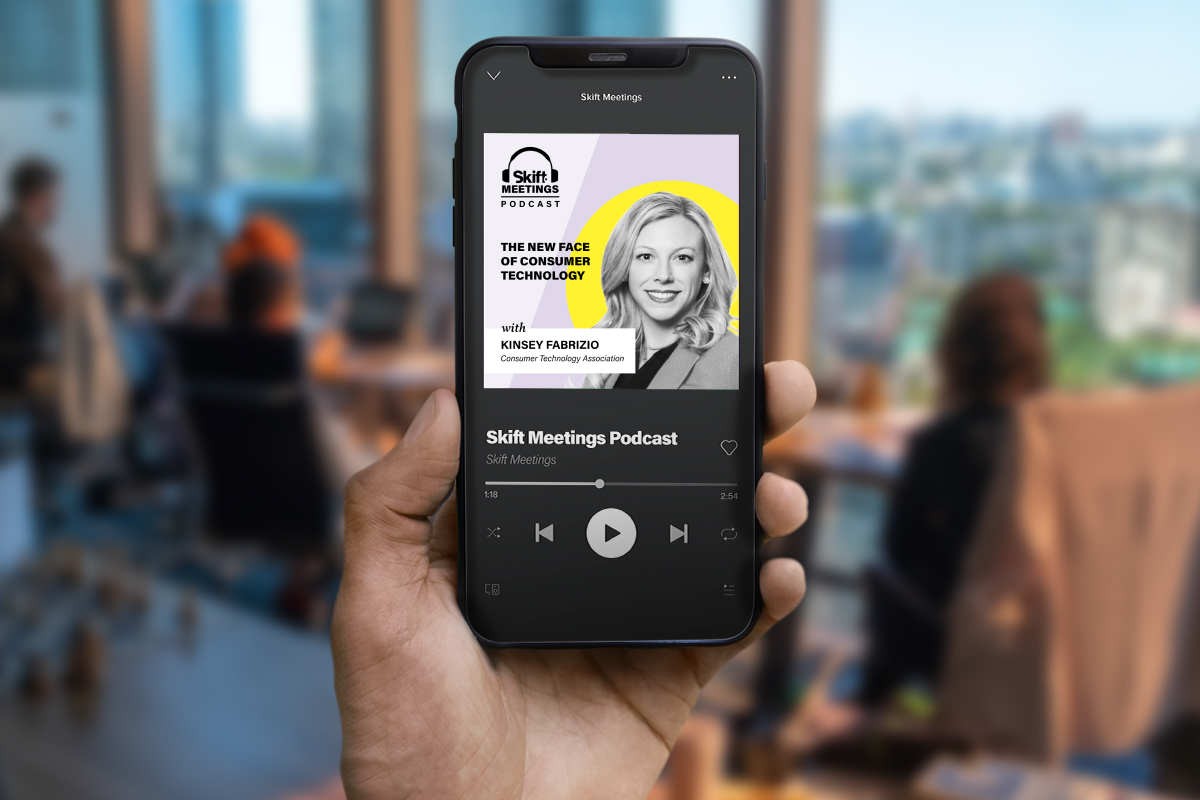Skift Take
This episode sees Merijn van Buuren, CEO at Event Mender, join to discuss the evolution of virtual events and online audiences.
Merijn’s first steps into the world of work landed him in the hospitality and events industry, via restaurants and catering, whilst also being very involved in the music scene, spending a lot of time DJing. Prior to the pandemic, van Buuren worked for an events company that focused on in-person events, which produced around 22 events a year, with his own focus being on the opportunities and value add for sponsors.
Subscribe to the Skift Meetings Podcast: Apple Podcasts | Spotify | Overcast | Pocket Casts | Google Podcasts | Amazon | RSS
A month into the role, the pandemic hit, which meant that the company’s largest event, due to take place in the US, was now canceled. The cancellation would mean the sponsorship funds would need to be returned, but thinking back to a previous role, van Buuren suggested switching to a virtual event, a move the company would support if he could ensure that the sponsorship value remained.
The event was a success and resulted in other companies coming to van Buuren and asking for his help. This in turn led to him starting his own company, originally called Virtual Positive, before creating Event Mender. With Event Mender, van Bruuen aims to build a tool that doesn’t just help you find the right platform but helps you create and deliver the best event possible. Van Bruuen talks us through the various services he was originally providing to clients, and how this has since evolved, for example looking to produce an event which is not only high quality but that works to actively engage the audience.
Whilst there are still a small number of people and organizations that are attending virtual events for the first time, van Buuren notes that it is clear to see that many of us have spent the past 2-plus years attending and organizing virtual events, therefore people have become more comfortable with the elements and processes. With the majority of people having plentiful experience of these events, expectations have increased. Whereas at the beginning of the pandemic audiences may have accepted video lagging, low audio quality or a speaker with a poor set-up, today’s audiences expect more.
Van Bruuen believes that personalization is the element which takes an event from good to great, arguing that you could create a great experience, but if you don’t ensure that it is aligned with the audience then it isn’t going to engage or resonate with them. The event should be as tailor-made as possible, such as engaging with the audience personally in the chat functions. Van Bruuen adds that this is actually easier to achieve than an in-person event because it doesn’t require you to try and hold a conversation with attendees whilst moving throughout an event space.
When beginning the process of developing his product, van Bruuen reached out to a variety of event professionals and asked if the problem he was seeing was actually one that they were experiencing. The resounding answer was yes, meaning that van Bruuen’s idea was one which was needed to help event professionals navigate all the event tech that was available to them, especially when the industry was developing at a breakneck speed. When considering what his platform should provide event professionals, he believes it is important to defer to the experts and ask them what information they are looking for, noting that many of them have years, if not decades, of experience, thus listening to them and hearing their needs will, hopefully, result in building a product that meets those.
When considering what he would like to see change or develop within the industry, van Bruuen is quick to note the various ‘bubbles’ that exist; the experts certain people or organizations always engage with and have worked with for many years. Whilst he notes that this means people know what to expect from each other, he adds that it limits the potential growth of the industry, lessening the cross-collaboration and innovation. Van Bruun believes that we should strive to achieve a cohesive industry where experiences, perspectives and learnings are shared, with the hope of making the industry and our knowledge bases the best they can be.
Want to hear the discussion in full? Head to your favorite podcast app now for this and all our previous episodes!
